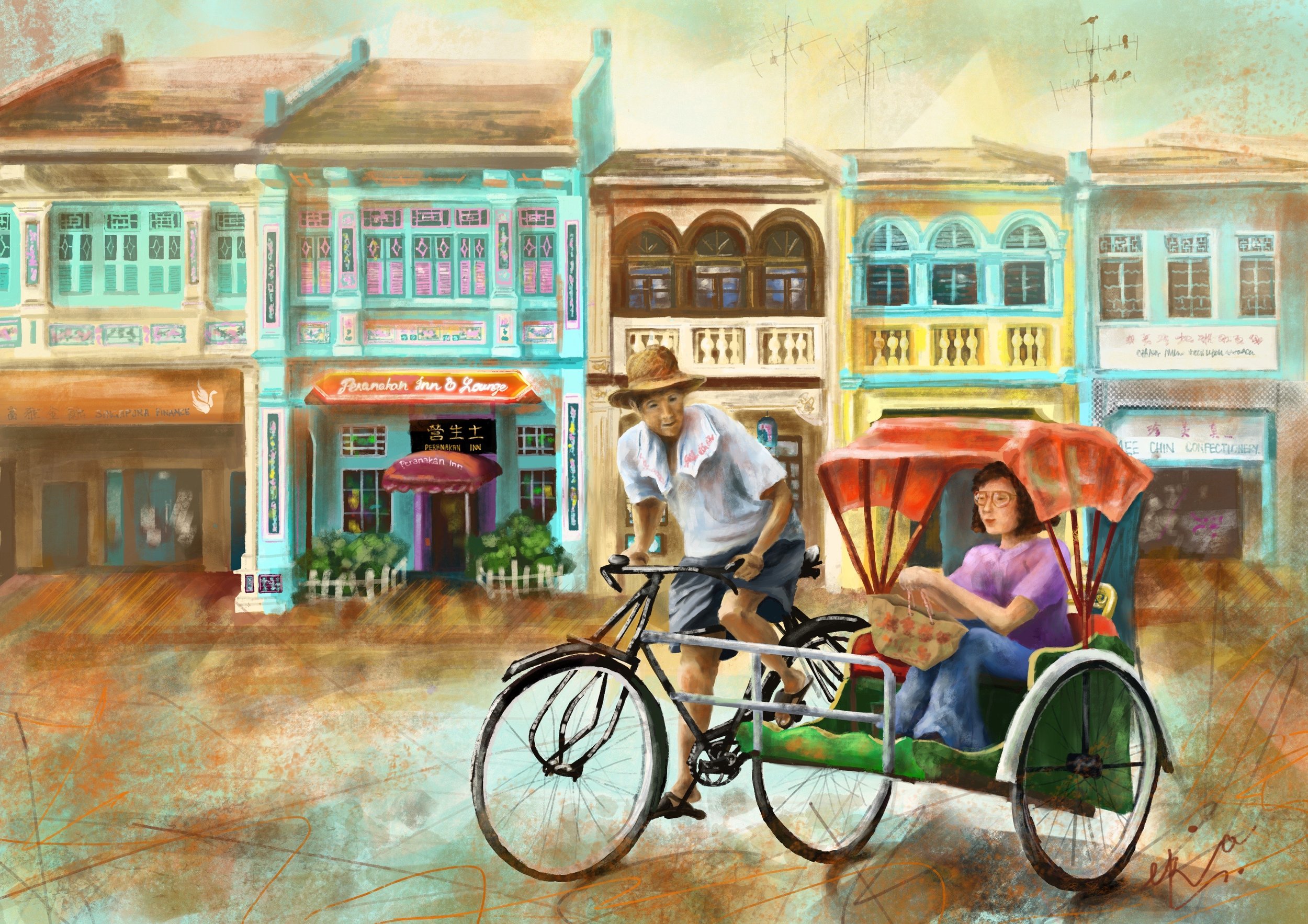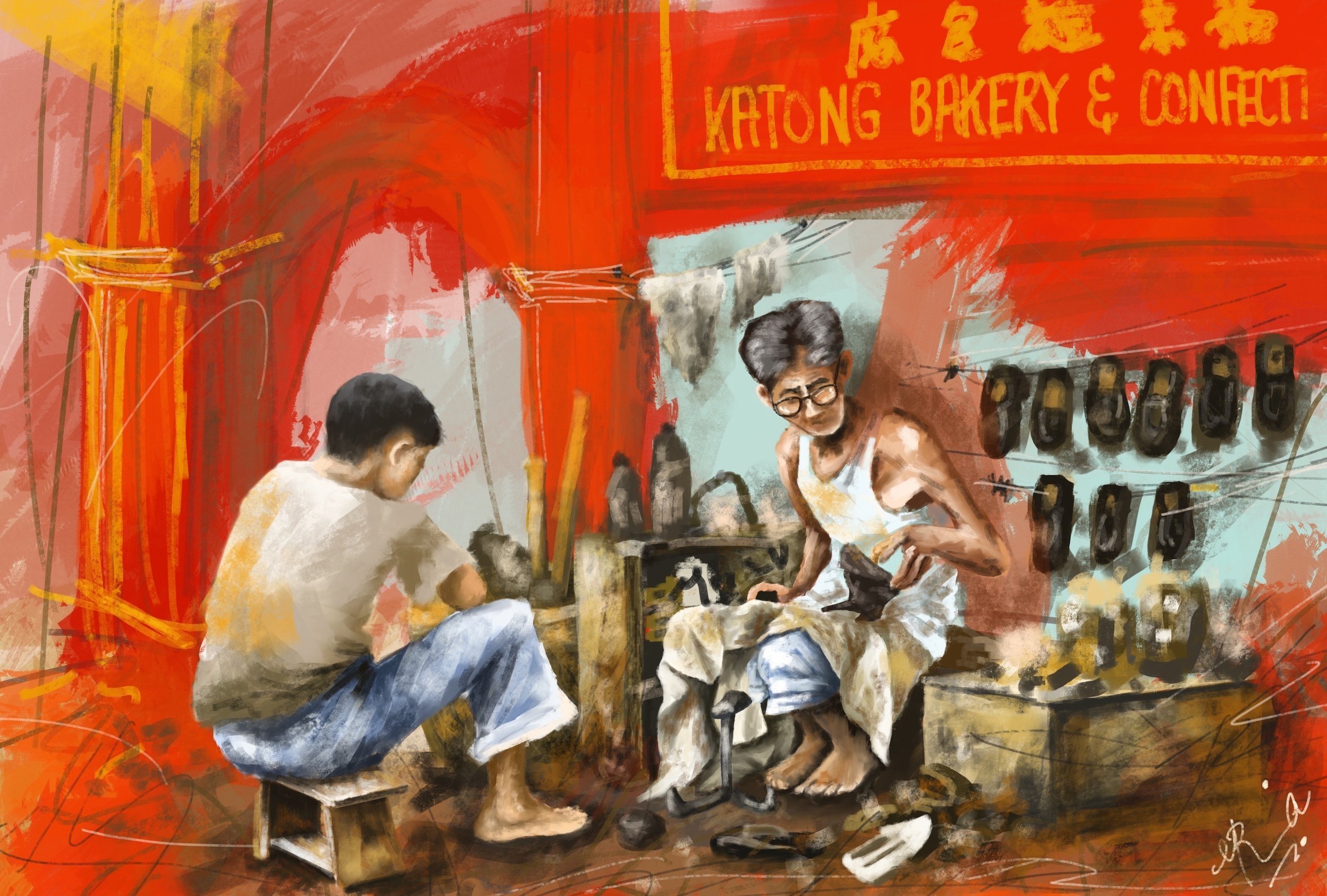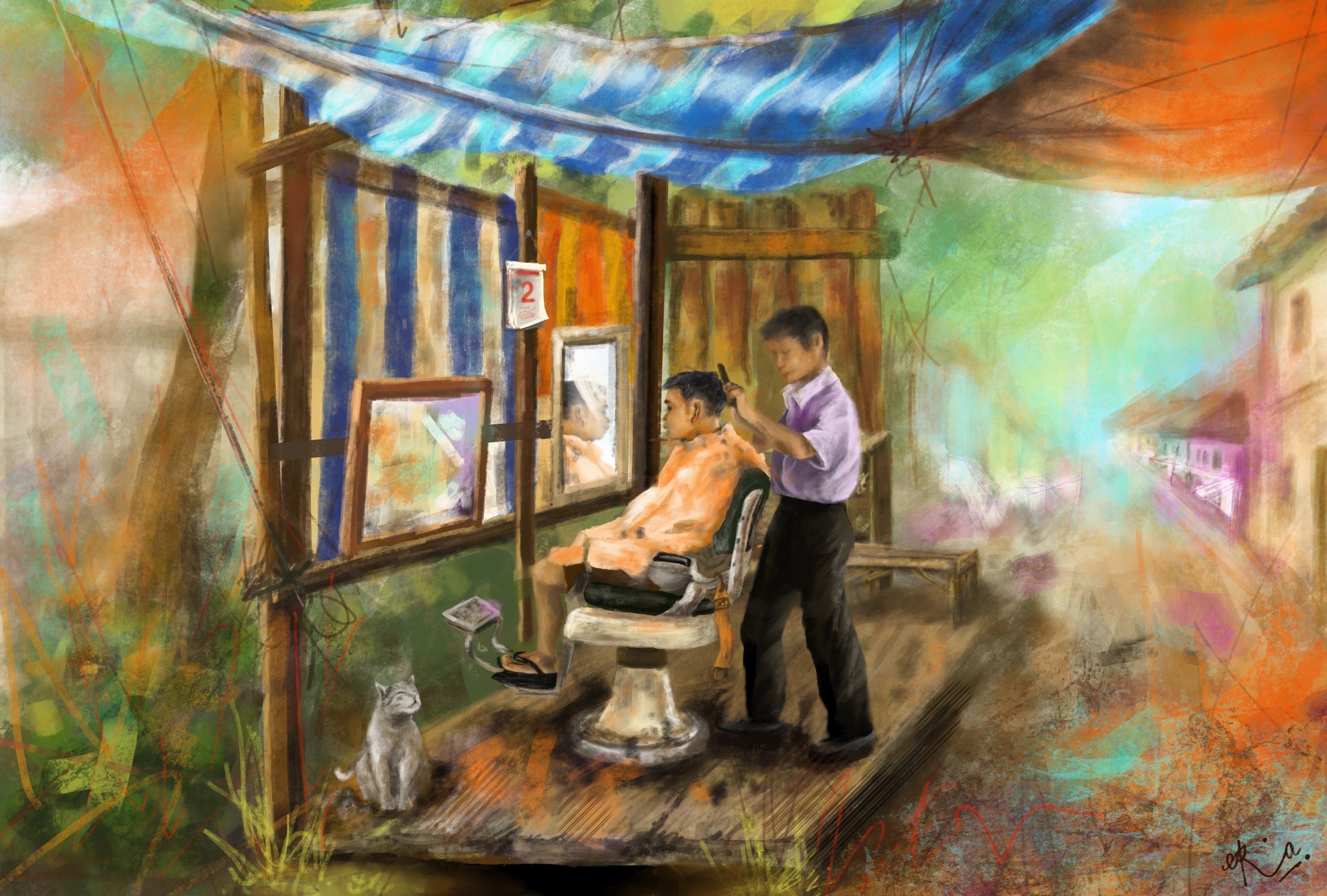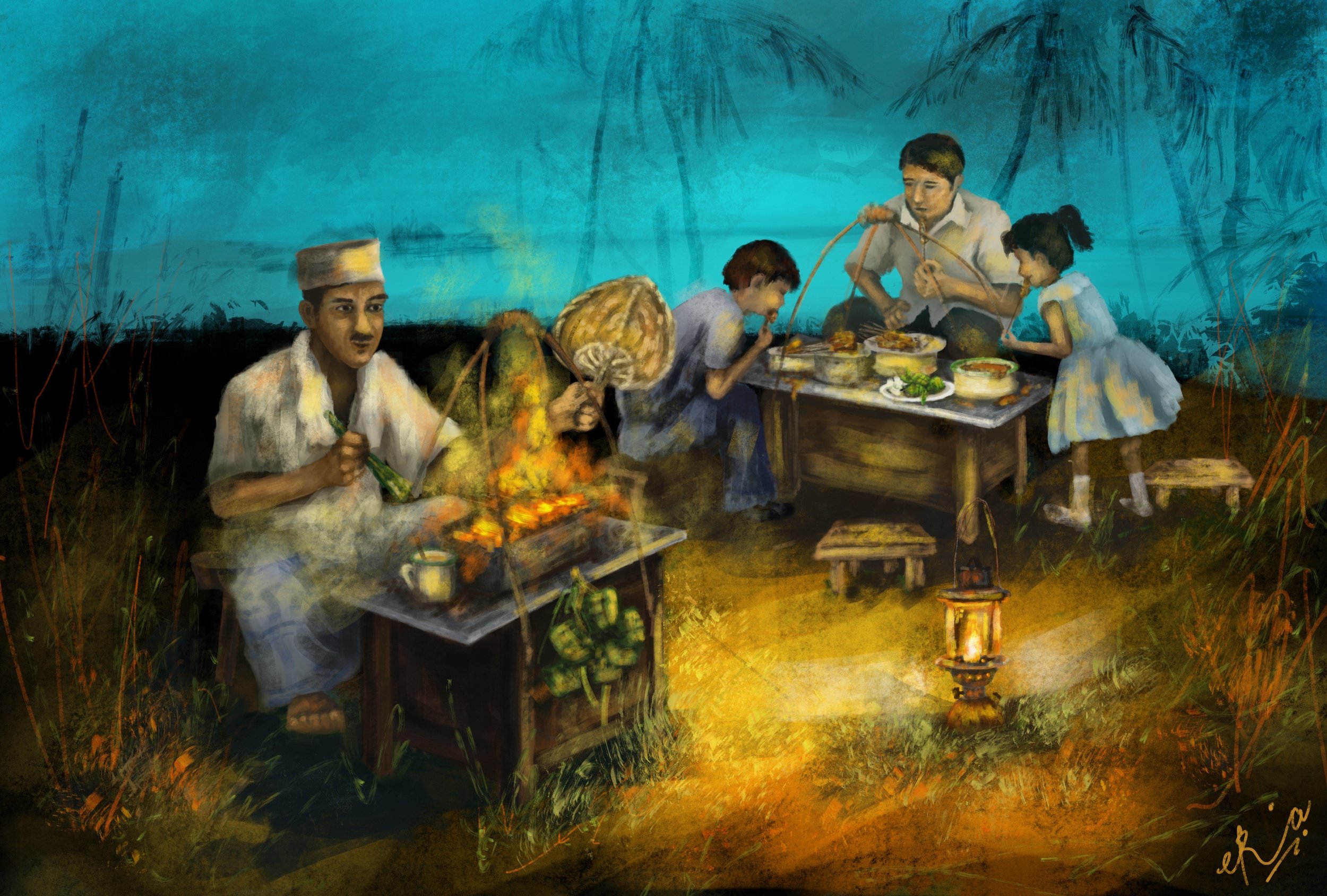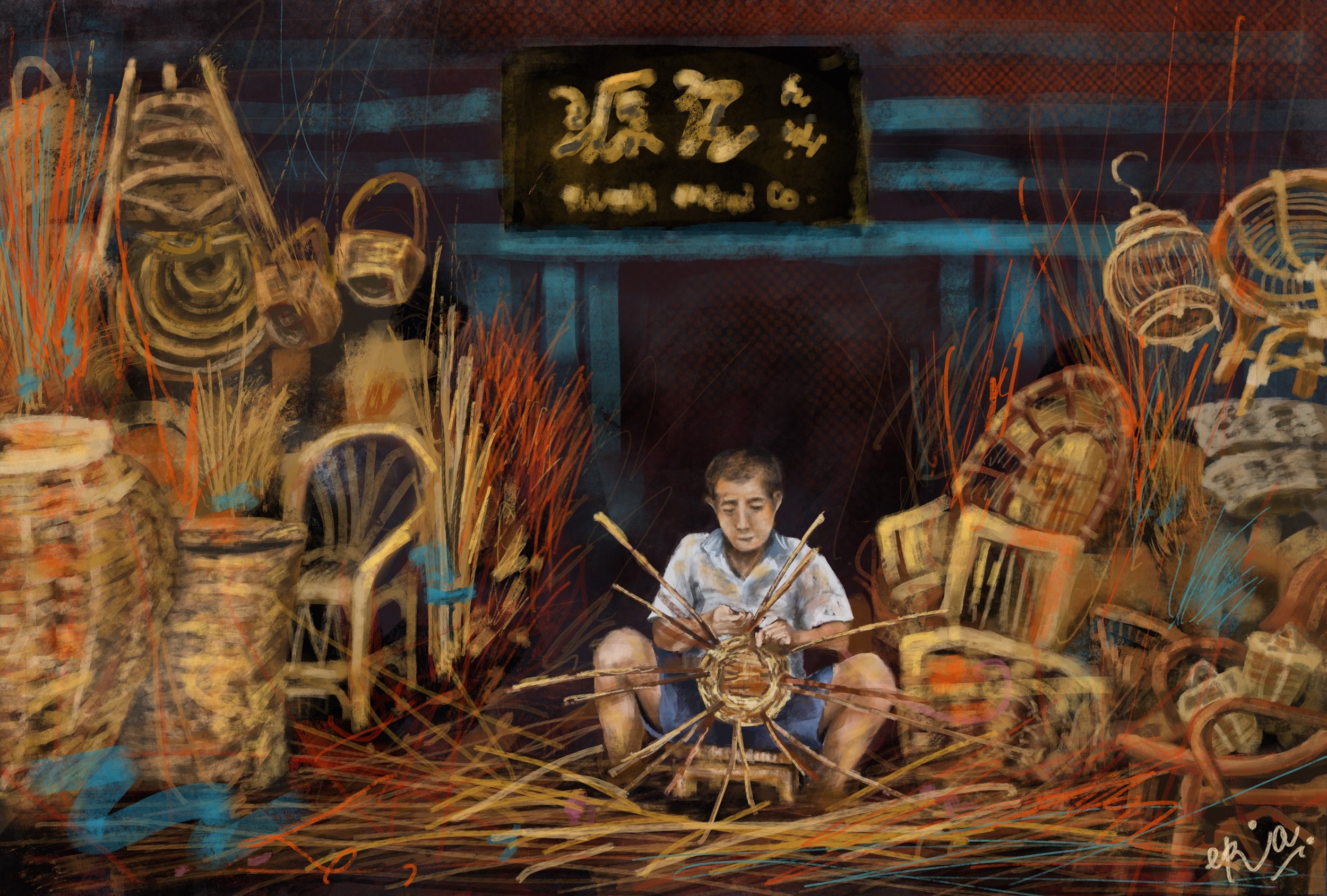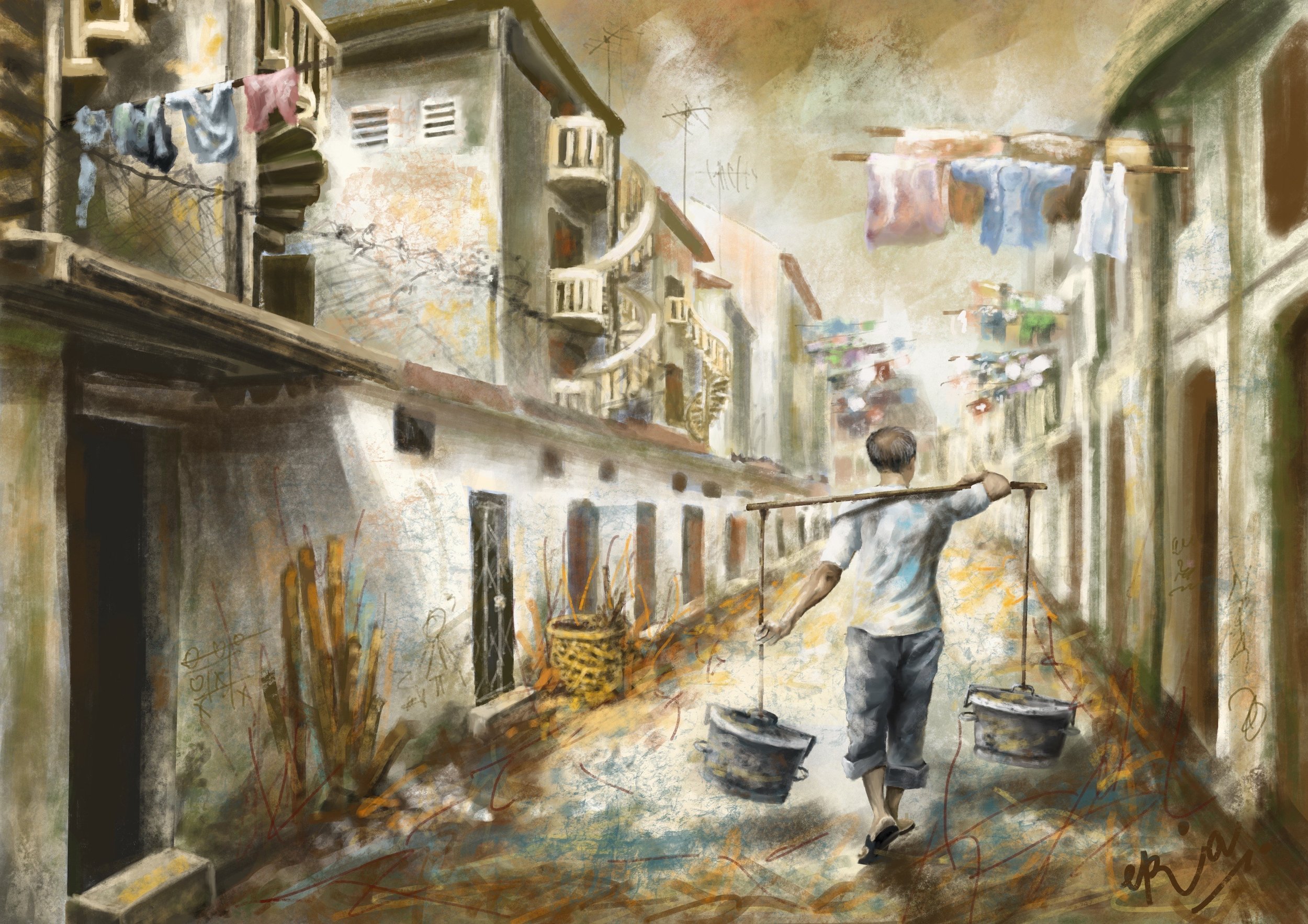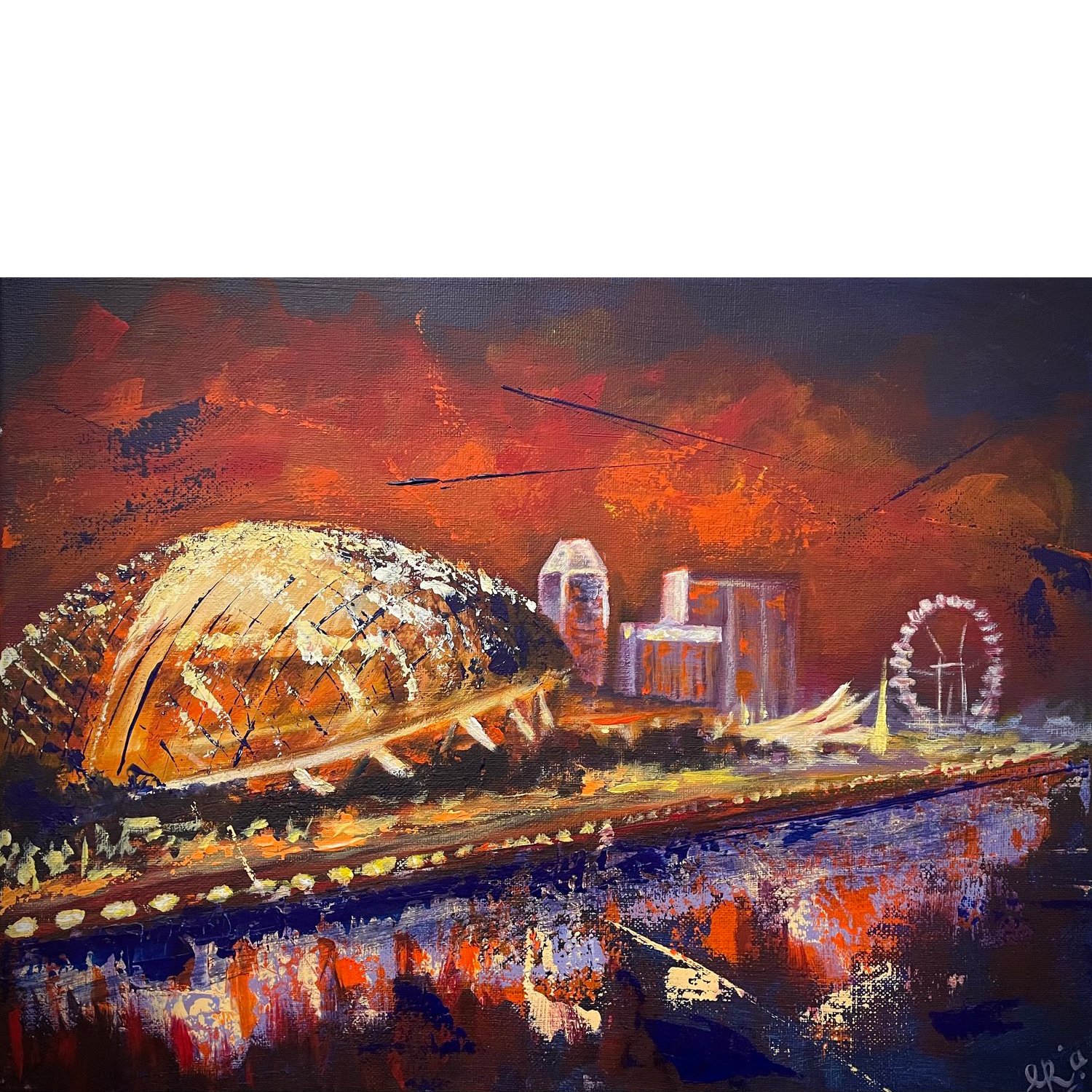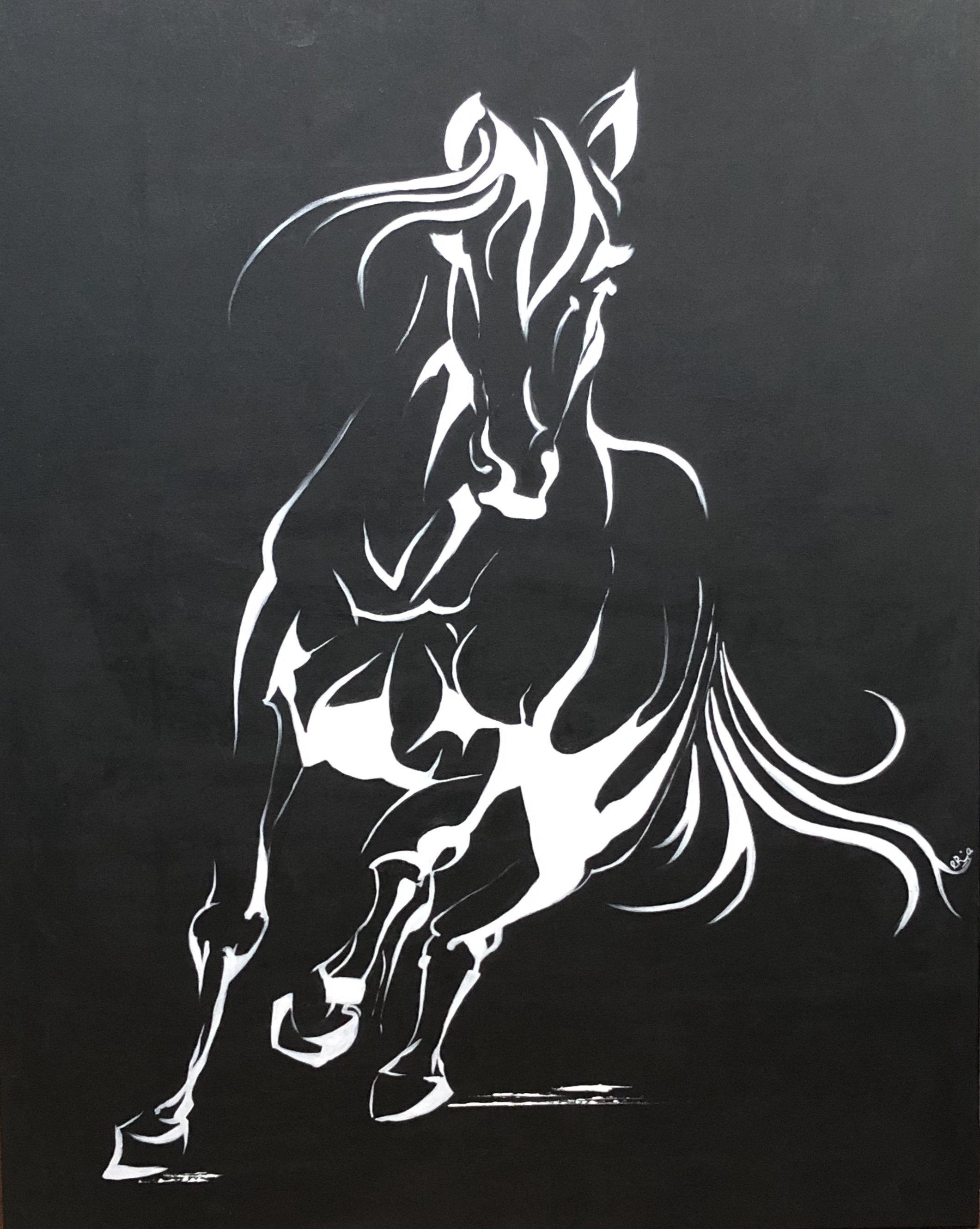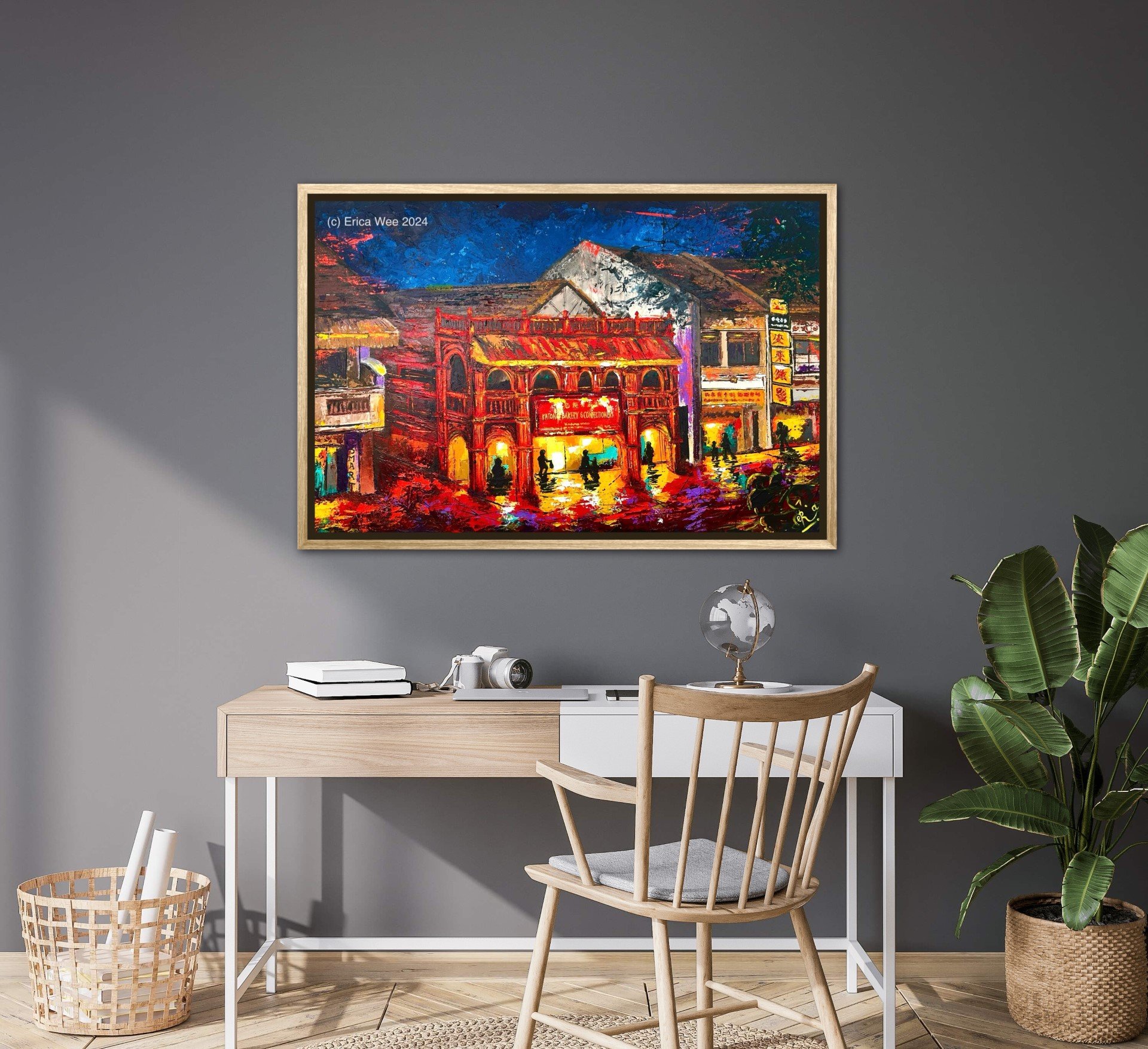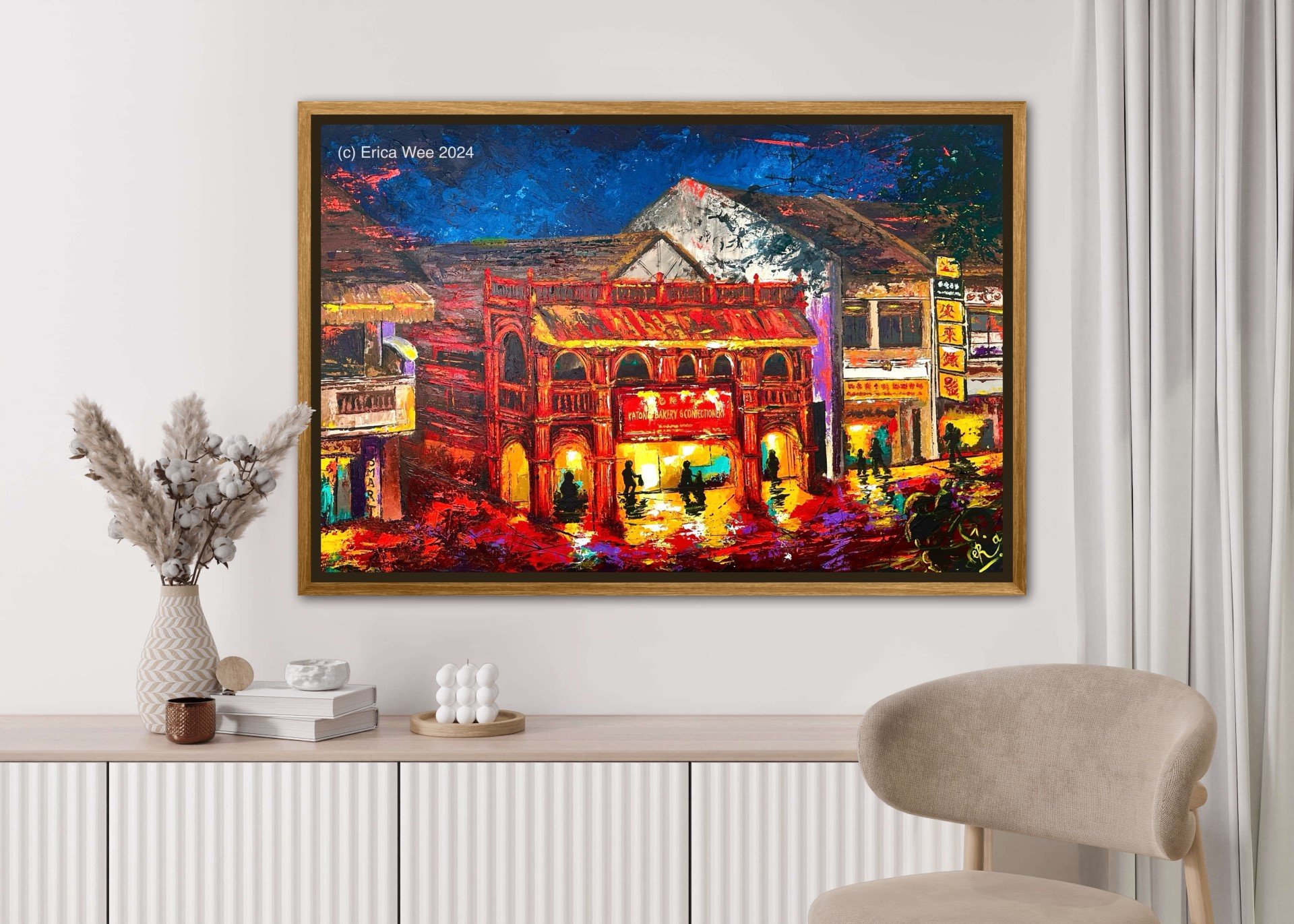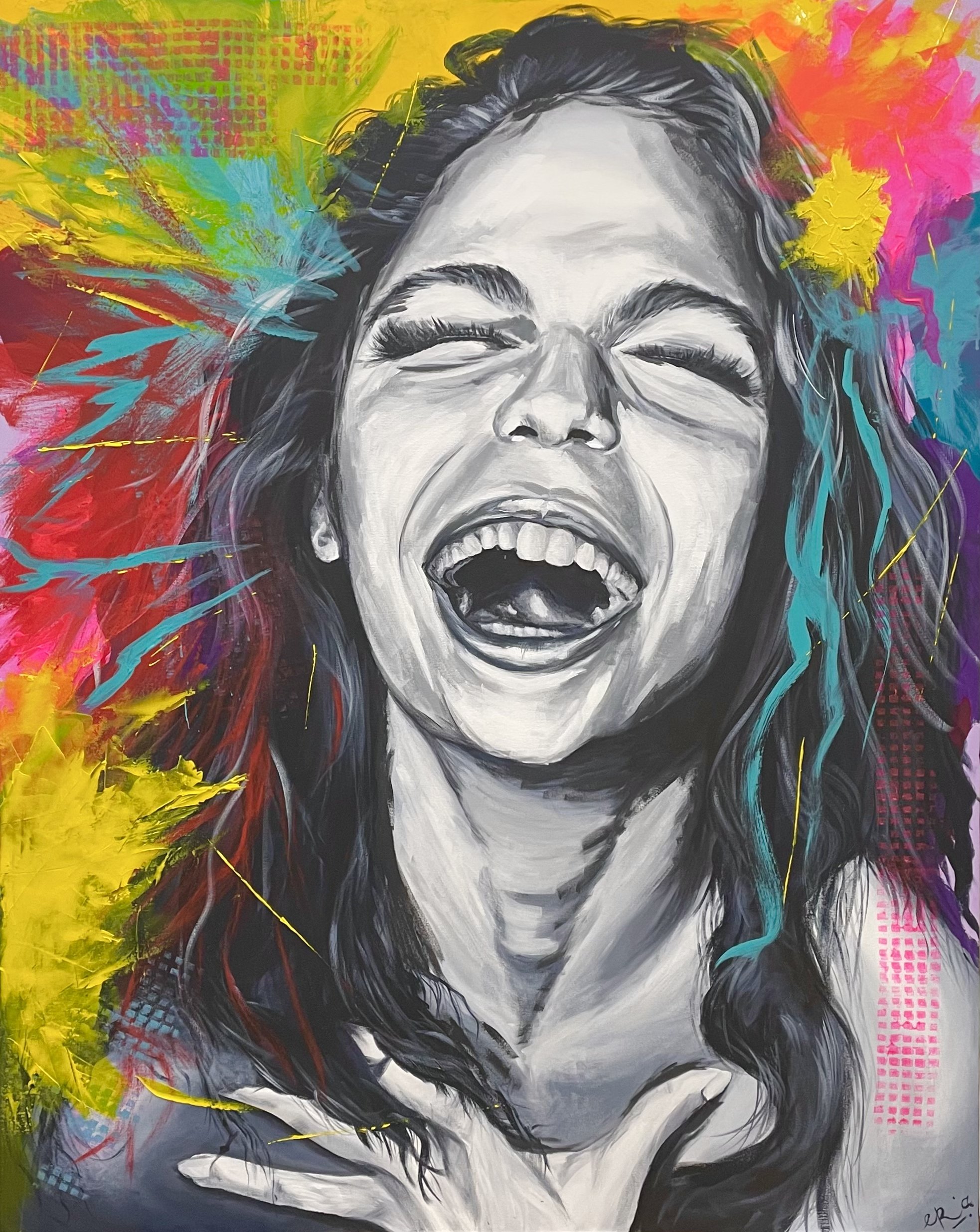Katong Of Yesteryear series
ERICA WEE
Hand-Embellished Fine Art Paper Reproductions (Framed)
2024
Available in 2 sizes:
30 × 40cm
40 x 50cm
Featuring forgotten Traders and Places, Katong of Yesteryear is a series of digital artworks by artist Erica Wee which revisits professions and locations around Katong in the 1960s to 1980s. Most of these professions have now either become obsolete due to a lack of apprenticeship or have marched off to the drumbeat of commercialisation.
What is hand-embellishment?
Hand-embellishment is a technique where an artist applies his/her unique touch of detailing to a fine art print, making it look more textured, and closer to an original than a simple art print; it elevates the value of the art work.
As the embellishment is done by hand, every piece will be one-of-a-kind.
For this pop-up exhibition, artist Erica will add on textures to the fine art prints in acrylic paint, making certain details and highlights of the artwork pop.
Roadside Cobbler
As a child, Erica used to enjoy squatting by the side of the Cobbler outside the Old Red House Bakery, fascinated by his skillful craft. Traditional cobblers were once a common sight in Singapore, after people switched from wearing wooden clogs to modern footwear in the 1950s. Setting up along five-foot-ways in front of shophouses and on street pavements, these skillful cobblers replaced old soles and heels, and stitched up torn slippers.
Street Barber
Sitting on wooden planks above a large drain off East Coast Road, one could get a haircut, a clean shave, and a strong head and shoulder massage. As a little girl, Erica used to accompany her father whenever he went for his haircut. Sitting on a tiny wooden stool, it was intriguing to watch the barber at work.
Trishaw Ride Home in Katong
As a kindergartener, it was always a treat for Erica whenever she got to ride home from school on the trishaw. By the late 1960s, rapid technological developments and the increasing accessibility of cars saw the trishaw becoming less popular as a mode of transportation in Singapore. By the 1980s, trishaws completely phased out as a means of travel for locals.
Night Soil Collector
Many of us are intrigued by these charming spiral staircases in quaint alleys of Singapore. “Night Soil”, a euphemism for human excreta, came about as the waste was collected in buckets at night by workers. They climbed up these spiral staircases to retrieve “night soil” from each floor.
Singapore in the 1970s was still largely rural and unsewered. By the late 1980s, Singapore’s sanitation system progressed entirely to the flush toilet, thus phasing out the night soil bucket system.
Rattan Furniture Weaver
“Rattan” refers to the stem of a climbing palm found in tropical regions. In Singapore, the making of rattan products is closely tied to its economic history. Historically known as the centre for entrepot trade of rattan, the rattan industry in Singapore reached its peak in the 1960s- 1970s, when there was a rapid growth in the processing of rattan raw materials and making of rattan products.
One of the few remaining rattan furniture shops in Singapore can still be found in Joo Chiat today.
Travelling Satay Man
While Singaporean’s love for Satay is still very much alive today, the Travelling Satay Man, with his iconic bamboo-woven fan, is no more. At the former Katong Park in the 1960s-1970s, the Travelling Satay Man used to barbecue his skewers of well-marinated meats over a flaming fire on a portable charcoal grill. Sitting beneath coconut trees with an expansive view of fisherman’s boats and outhouses built on poles over the water, these simple pleasures have all disappeared when the coastal land was reclaimed in the 1970s.
ERICA WEE
Hand-Embellished Fine Art Paper Reproductions (Framed)
2024
Available in 2 sizes:
30 × 40cm
40 x 50cm
Featuring forgotten Traders and Places, Katong of Yesteryear is a series of digital artworks by artist Erica Wee which revisits professions and locations around Katong in the 1960s to 1980s. Most of these professions have now either become obsolete due to a lack of apprenticeship or have marched off to the drumbeat of commercialisation.
What is hand-embellishment?
Hand-embellishment is a technique where an artist applies his/her unique touch of detailing to a fine art print, making it look more textured, and closer to an original than a simple art print; it elevates the value of the art work.
As the embellishment is done by hand, every piece will be one-of-a-kind.
For this pop-up exhibition, artist Erica will add on textures to the fine art prints in acrylic paint, making certain details and highlights of the artwork pop.
Roadside Cobbler
As a child, Erica used to enjoy squatting by the side of the Cobbler outside the Old Red House Bakery, fascinated by his skillful craft. Traditional cobblers were once a common sight in Singapore, after people switched from wearing wooden clogs to modern footwear in the 1950s. Setting up along five-foot-ways in front of shophouses and on street pavements, these skillful cobblers replaced old soles and heels, and stitched up torn slippers.
Street Barber
Sitting on wooden planks above a large drain off East Coast Road, one could get a haircut, a clean shave, and a strong head and shoulder massage. As a little girl, Erica used to accompany her father whenever he went for his haircut. Sitting on a tiny wooden stool, it was intriguing to watch the barber at work.
Trishaw Ride Home in Katong
As a kindergartener, it was always a treat for Erica whenever she got to ride home from school on the trishaw. By the late 1960s, rapid technological developments and the increasing accessibility of cars saw the trishaw becoming less popular as a mode of transportation in Singapore. By the 1980s, trishaws completely phased out as a means of travel for locals.
Night Soil Collector
Many of us are intrigued by these charming spiral staircases in quaint alleys of Singapore. “Night Soil”, a euphemism for human excreta, came about as the waste was collected in buckets at night by workers. They climbed up these spiral staircases to retrieve “night soil” from each floor.
Singapore in the 1970s was still largely rural and unsewered. By the late 1980s, Singapore’s sanitation system progressed entirely to the flush toilet, thus phasing out the night soil bucket system.
Rattan Furniture Weaver
“Rattan” refers to the stem of a climbing palm found in tropical regions. In Singapore, the making of rattan products is closely tied to its economic history. Historically known as the centre for entrepot trade of rattan, the rattan industry in Singapore reached its peak in the 1960s- 1970s, when there was a rapid growth in the processing of rattan raw materials and making of rattan products.
One of the few remaining rattan furniture shops in Singapore can still be found in Joo Chiat today.
Travelling Satay Man
While Singaporean’s love for Satay is still very much alive today, the Travelling Satay Man, with his iconic bamboo-woven fan, is no more. At the former Katong Park in the 1960s-1970s, the Travelling Satay Man used to barbecue his skewers of well-marinated meats over a flaming fire on a portable charcoal grill. Sitting beneath coconut trees with an expansive view of fisherman’s boats and outhouses built on poles over the water, these simple pleasures have all disappeared when the coastal land was reclaimed in the 1970s.
ERICA WEE
Hand-Embellished Fine Art Paper Reproductions (Framed)
2024
Available in 2 sizes:
30 × 40cm
40 x 50cm
Featuring forgotten Traders and Places, Katong of Yesteryear is a series of digital artworks by artist Erica Wee which revisits professions and locations around Katong in the 1960s to 1980s. Most of these professions have now either become obsolete due to a lack of apprenticeship or have marched off to the drumbeat of commercialisation.
What is hand-embellishment?
Hand-embellishment is a technique where an artist applies his/her unique touch of detailing to a fine art print, making it look more textured, and closer to an original than a simple art print; it elevates the value of the art work.
As the embellishment is done by hand, every piece will be one-of-a-kind.
For this pop-up exhibition, artist Erica will add on textures to the fine art prints in acrylic paint, making certain details and highlights of the artwork pop.
Roadside Cobbler
As a child, Erica used to enjoy squatting by the side of the Cobbler outside the Old Red House Bakery, fascinated by his skillful craft. Traditional cobblers were once a common sight in Singapore, after people switched from wearing wooden clogs to modern footwear in the 1950s. Setting up along five-foot-ways in front of shophouses and on street pavements, these skillful cobblers replaced old soles and heels, and stitched up torn slippers.
Street Barber
Sitting on wooden planks above a large drain off East Coast Road, one could get a haircut, a clean shave, and a strong head and shoulder massage. As a little girl, Erica used to accompany her father whenever he went for his haircut. Sitting on a tiny wooden stool, it was intriguing to watch the barber at work.
Trishaw Ride Home in Katong
As a kindergartener, it was always a treat for Erica whenever she got to ride home from school on the trishaw. By the late 1960s, rapid technological developments and the increasing accessibility of cars saw the trishaw becoming less popular as a mode of transportation in Singapore. By the 1980s, trishaws completely phased out as a means of travel for locals.
Night Soil Collector
Many of us are intrigued by these charming spiral staircases in quaint alleys of Singapore. “Night Soil”, a euphemism for human excreta, came about as the waste was collected in buckets at night by workers. They climbed up these spiral staircases to retrieve “night soil” from each floor.
Singapore in the 1970s was still largely rural and unsewered. By the late 1980s, Singapore’s sanitation system progressed entirely to the flush toilet, thus phasing out the night soil bucket system.
Rattan Furniture Weaver
“Rattan” refers to the stem of a climbing palm found in tropical regions. In Singapore, the making of rattan products is closely tied to its economic history. Historically known as the centre for entrepot trade of rattan, the rattan industry in Singapore reached its peak in the 1960s- 1970s, when there was a rapid growth in the processing of rattan raw materials and making of rattan products.
One of the few remaining rattan furniture shops in Singapore can still be found in Joo Chiat today.
Travelling Satay Man
While Singaporean’s love for Satay is still very much alive today, the Travelling Satay Man, with his iconic bamboo-woven fan, is no more. At the former Katong Park in the 1960s-1970s, the Travelling Satay Man used to barbecue his skewers of well-marinated meats over a flaming fire on a portable charcoal grill. Sitting beneath coconut trees with an expansive view of fisherman’s boats and outhouses built on poles over the water, these simple pleasures have all disappeared when the coastal land was reclaimed in the 1970s.

